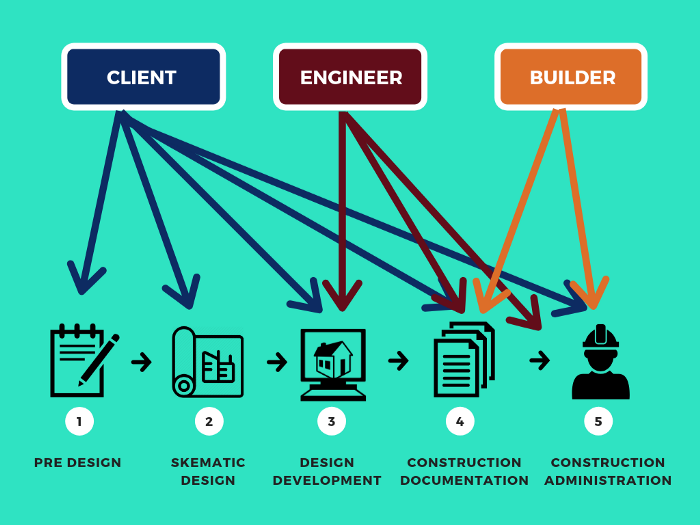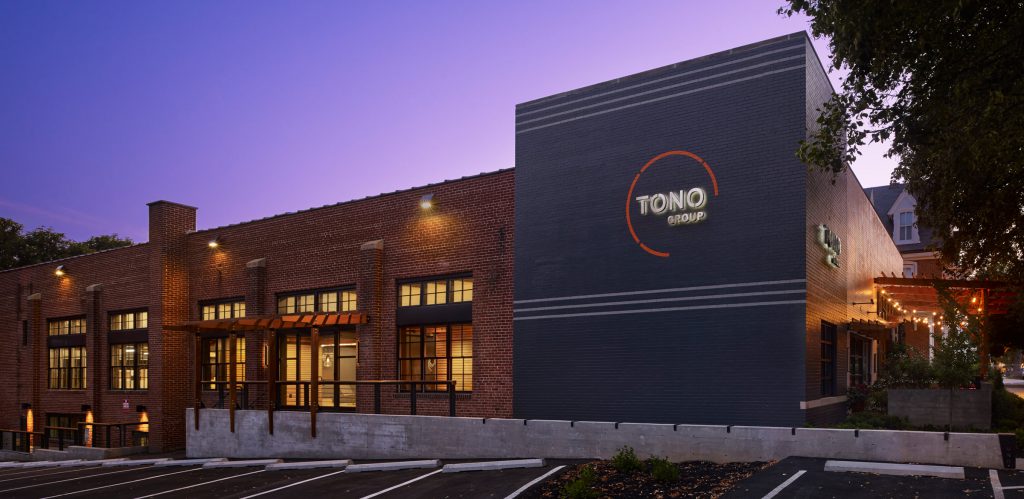
WHAT’S THE DIFFERENCE BETWEEN AN ARCHITECT, ENGINEER, AND BUILDER
The completion of any quality design and construction project requires the expertise of several types of industry professionals. The combined efforts of the project architect, engineer(s), and builder create spaces that are aesthetically pleasing, functional, safe, and built to last. While their end goals all revolve around efficient project delivery, these professionals take on very different roles and responsibilities throughout the process.
The Architect: Designs & Leads the Project
The National Council of Architectural Registration Boards (NCARB) defines an architect as a:
Licensed professional[ ] trained in the art and science of the design and construction of buildings and structures that primarily provide shelter. An architect will create the overall aesthetic and look of buildings and structures, but the design of a building involves far more than its appearance. Buildings also must be functional, safe, and economical and must suit the specific needs of the people who use them. Most importantly, they must be built with the public’s health, safety and welfare in mind.
Additionally, the Pennsylvania chapter of the American Institute of Architects (AIA) defines the practice of architecture:
The rendering or offering to render certain services… in connection with the design and construction of a structure or group of structures which have as their principal purpose human habitation or use, and the utilization of space within and surrounding such structures.
In other words, the architect must view each project holistically—not only in terms of aesthetic quality. Every component they plan must come together to serve the end user; the focus is creating a good design with people top of mind.

Major Steps in the Architectural Design Process. Image courtesy of Medium.
As we discussed in an earlier post covering the steps in the architectural design process, the architect is involved throughout the duration of the project. Sometimes assisting at the outset—even before design work can begin—they help choose a potential site or determine the limitations of an existing facility. Later, during the construction phase of project delivery, they continue to monitor progress through regular site visits and meetings with the general contractor. This continued presence throughout the design and building process puts the architect in a unique position to manage all moving parts of project delivery. They often take on the role of lead consultant, accepting general responsibility for every aspect of the project and acting as a primary point of contact for the client.
The Engineer: Answers the Question “How Will the Design Work?”
Any engineers involved in a project, whether structural, mechanical, electrical, or any other discipline, work in coordination with the architect to design the project’s technical systems by applying scientific principles. Their professional education does not include abstract artistic concepts (as an architect’s would) but rather subjects related to the real-world application of systems, including extensive math and physics. They answer the question, “Will the system work as the design intends?” setting functional limits and creating parameters for the design plan.
The sheer number of distinct engineering specializations means that any engineer is keenly focused on one specific area of a project. For instance, a structural engineer is strictly concerned with the strength and stability of building design and materials, while a mechanical engineer is hired to design power-using machines, such as refrigeration and air-conditioning systems. Often lacking the architect’s high-level, all-encompassing view of the project delivery process, engineers are usually called upon as their expertise is needed.
The Builder: Manages the Construction Process
As the other critical link in the project delivery team, the builder uses his technical knowledge to coordinate and complete construction. Responsible for the means and methods of delivery, they develop a well-oiled construction process. Everything from interpreting design plans, to scheduling subcontractors, to calculating quantities, costs, and sourcing of building materials, falls under the builder’s realm of responsibility.
Through regular on- and off-site meetings with the project’s architect and engineers, the builder ensures that the integrity of the design is maintained throughout construction. It’s their responsibility to translate all plans into a physical building, meeting expectations on time and within budget.

Involvement of the Client, Engineer, and Builder in the Traditional Project Delivery Process. Image courtesy of Medium.
Equipped with interconnected, but ultimately distinct skill sets, the architect, engineer(s), and builder work together to design and build meaningful places. At TONO Group, we have the added advantage of housing a team of architectural designers and builders under one roof, making it even easier to collaborate for the betterment of each project.
To learn more about the ultra-efficient project delivery process we’ve adopted, click here.

